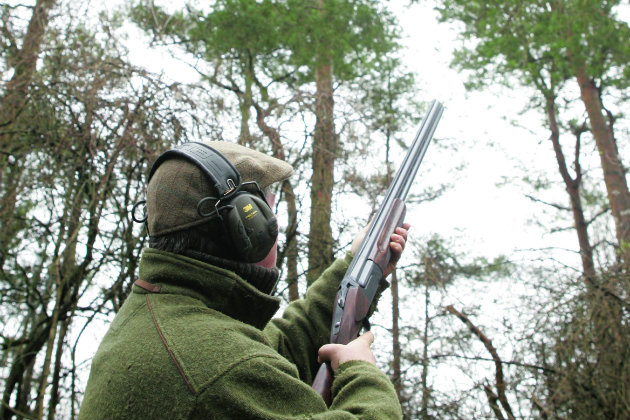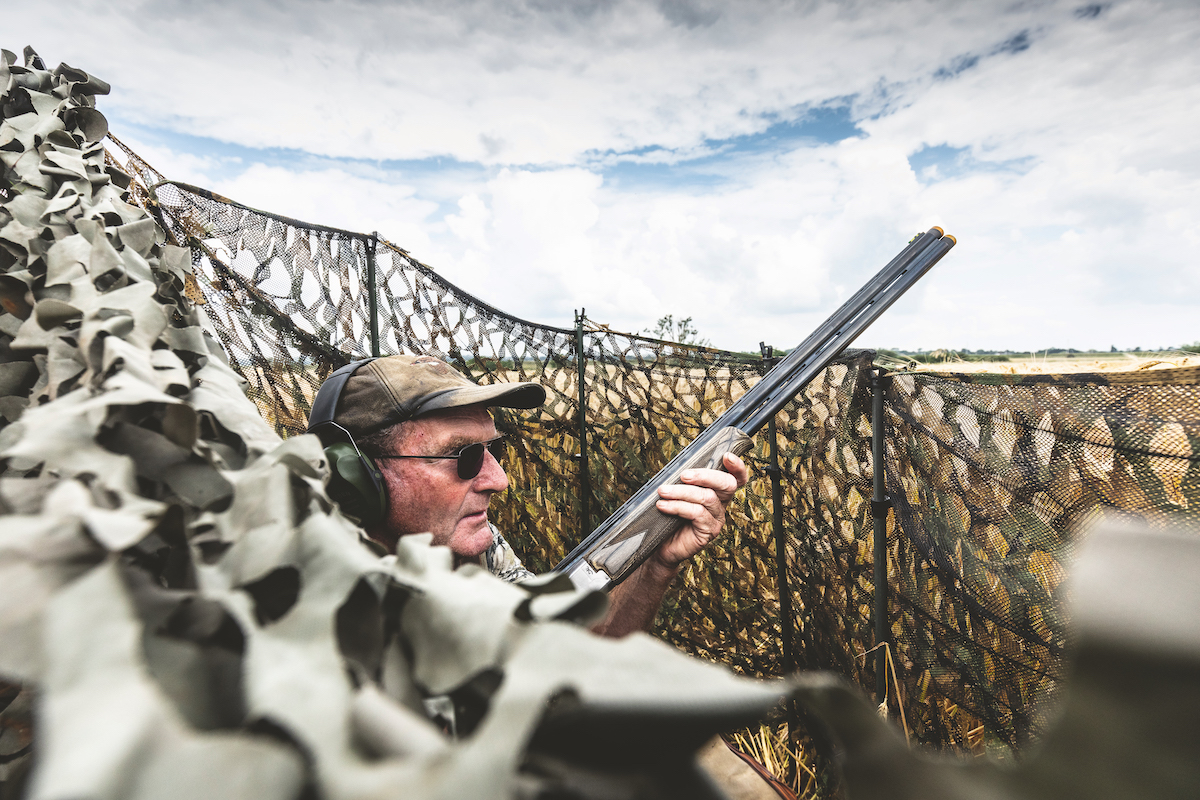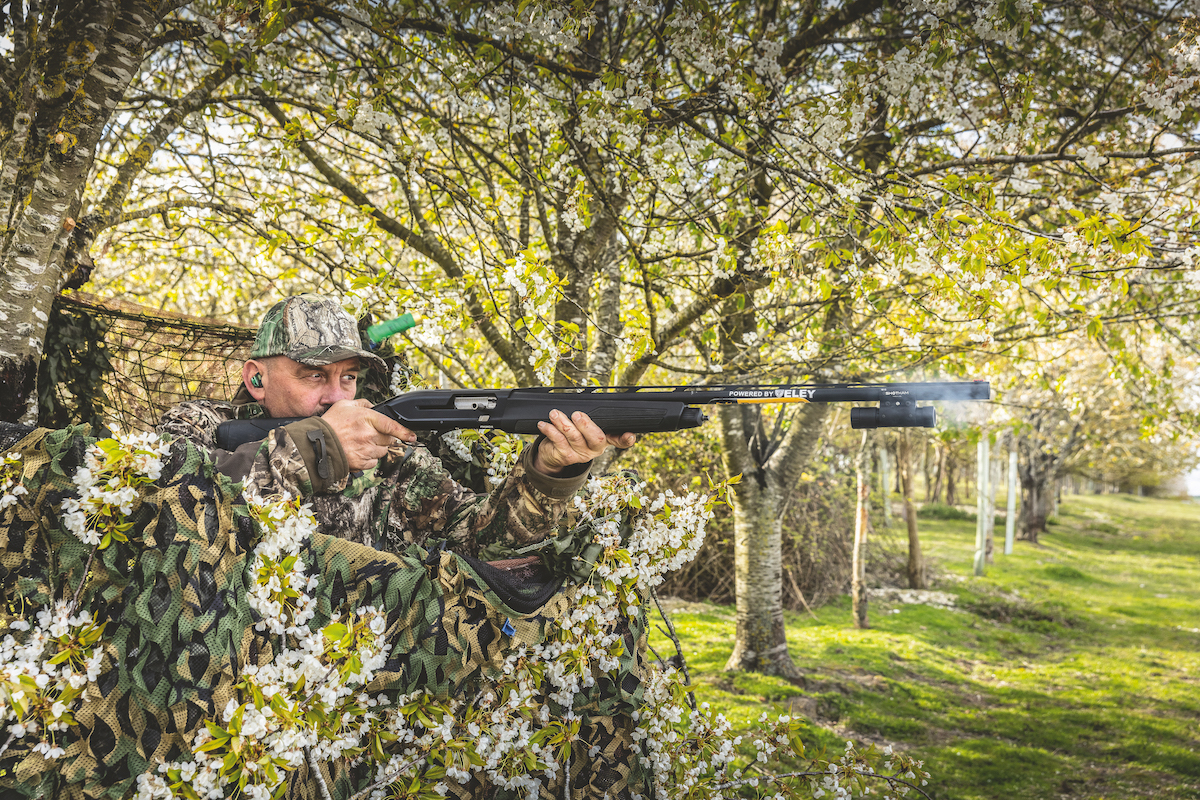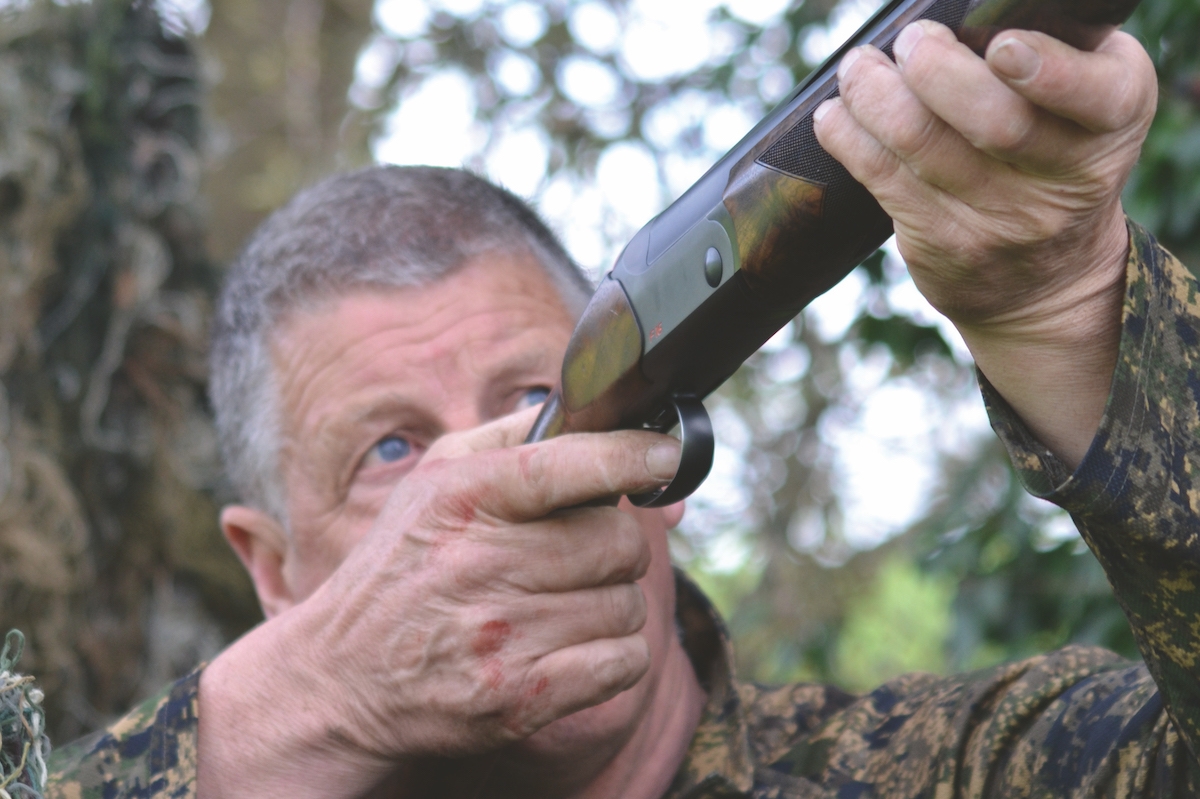Get in line for roosting results
Flightline and roost shooting present unique challenges, but Tom Payne's advice should help you tighten your technique and put you in the action

Use the trees to judge if the birds are in range
In this piece, I will explain some of the techniques needed to shoot pigeon that are flighting and roosting.
Flighting pigeon and roost shooting are challenging sports. The angles, speed and distances that the woodpigeon fly outmatch any other form of quarry we shoot in this country. It can also be difficult to find the ideal conditions for flighting and roosting. This can make building a bag-to- shot ratio humbling.
Establishing a consistent flightline
Flightline shooting is when you place yourself directly under a flightline of birds going from a roosting wood to their chosen food source, or from their chosen food source back to their roosting wood. Once you have established a consistent flightline you will need to locate yourself far enough from their roosting wood, so that you don’t disturb the flight or the roosting wood. Birds coming from distance will always provide a more successful shoot and a longer outing.
Winter flighting is the most tricky, as you must rely on good, windy days to break up the flock so they travel to their feeding ground in groups instead of singles. A strong wind will reduce the height the birds fly at, which makes it easier to shoot them. flighting pigeon in the spring and summer are easier to target — especially in breezy, not windy, conditions — as birds will not be travelling in large numbers.

Stand up for pigeon shooting so that you can move around
Techniques for flightline shooting
To undertake flightlight shooting, you must put yourself under a flightline. Make sure you are standing up, because you will need to move around a lot to adjust for different angles of the birds as they come in. if you are in a hide, it should be more than head-height tall so that you can stand in comfort without being seen at distance. The floor should be level so that you can move your feet easily.

Decoys set up under the flightline will attract birds
Decoying techniques
Decoying in front of you directly under the flightline — also known as advanced decoying — can help concentrate the flightline. Pigeon are inquisitive birds, so when they drop at speed to investigate their “friends” below, it will offer you a full array of shots. This is great fun and will sometimes feel like an extreme form of driven gameshooting with birds approaching you like grouse on the wind.
Shot selection
Due to the varied number of shots that you will have to deal with, it is vital that you make good bird selection. This will be achieved by paying complete attention to arriving birds and concentrating on what they are doing in flight. One of the toughest shots is trying to consistently kill pigeon at a reasonable height moving on the wind. This is purely down to the line of the bird and the difficulty in reading that line as the shooter. A pigeon only has to dip or turn a wing and you will be in all sorts of trouble.

Once you have selected, commit to your bird
Be committed
Once you have selected your bird, you must shoot it with commitment. Timing is everything when shooting flighted pigeon. Hold on for a split second and you will run the risk of the bird flaring. Being committed to a shot and getting on with it doesn’t mean that you rush your shot in any way; it’s making sure that you are positive with the shot and fully aware of where you want to hit the bird. This does take a lot of time to develop and only by shooting a lot of pigeon, and flighting a lot of pigeon, will you develop that ability to make a correct judgement of the bird in flight, allowing you to set yourself up for the shot with minimal thought.
Techniques for roosting and flighting through woodland
Shooting roosting or pigeon flighting over woodland to roost brings with it its own challenges to the shooter. following all of these guidelines regarding bird selection and being positive and committed to the shot will help, but there are some added problems to consider, such as trees and limited “windows” to shoot from.
Position yourself properly
It is important that you position yourself where you can maximise your shooting without being seen by approaching birds. Many shooters simply put themselves in the wrong place, which makes shooting difficult. You cannot shoot pigeon roosting if you are having to snap- shoot all the time. If conditions are windy, it will make your task even more difficult.
Find a position that gives you the best opportunity to see and select a bird. Make sure that you have a good backdrop so that your silhouette blends into the surroundings. This will allow you to move slowly to set yourself up for your shot but will also mean that approaching birds won’t see you unless you make a sudden movement and the flash of your face causes evasive action from the bird.
Practice and focus
Shooting in woodland takes practice. If you are shooting in fir woods, shooting through the trees becomes a non-starter, but in hard woods you must have the confidence that your shot will get there when shooting pigeon through the trees. This takes a lot of focus. Branches are a big problem because they draw the shooter’s eye from the bird, causing you to stop or lose the line of the bird. It’s important not to allow the branches to interfere with your concentration — you must keep complete focus on the bird.
Distance and line
Reading the birds’ line and height through trees can be difficult. If you arrive earlier than the planned shoot, you can get yourself into a good shooting position and assess your ranges, utilising the trees around you. If you are aware of the height of the trees this will help you judge the distance of your arriving birds. It is very easy to shoot at birds that are too far away or even shoot at birds too early because you’ve been deceived by their true distance.
Tom’s top tips
- Flightline shooting requires you to be in the perfect spot to maximise shooting possibilities. If you are not under the flightline you will end up shooting at birds too far away.
- During the winter, you need windy days to break up the flocks. Spring and summer flighting doesn’t require strong winds.
- To shoot successfully you must have a correct and comfortable shooting position. Foot work is so important in order for you to adjust to the various shots that will be on offer.
- A high hide and level standing are also key factors. The high hide will allow you to move correctly without being seen and a level standing will allow you to move your feet accordingly.
- Bird selection is important and you must focus on what the bird is doing in flight. If you can focus on what the bird is doing, you will read it correctly and mentally prepare yourself for the shot. Many birds are missed due to missing the line and getting the timing wrong.
- Position yourself correctly in your roosting wood so that you maximise your angles, have a good “window” to see birds arriving and to ensure your backdrop conceals you.
- Steady movements are important because arriving birds have amazing eyesight and will take evasive action if they see a flash of a white face.
- You must be completely focused on the bird when shooting through trees and branches.








